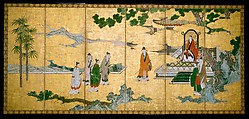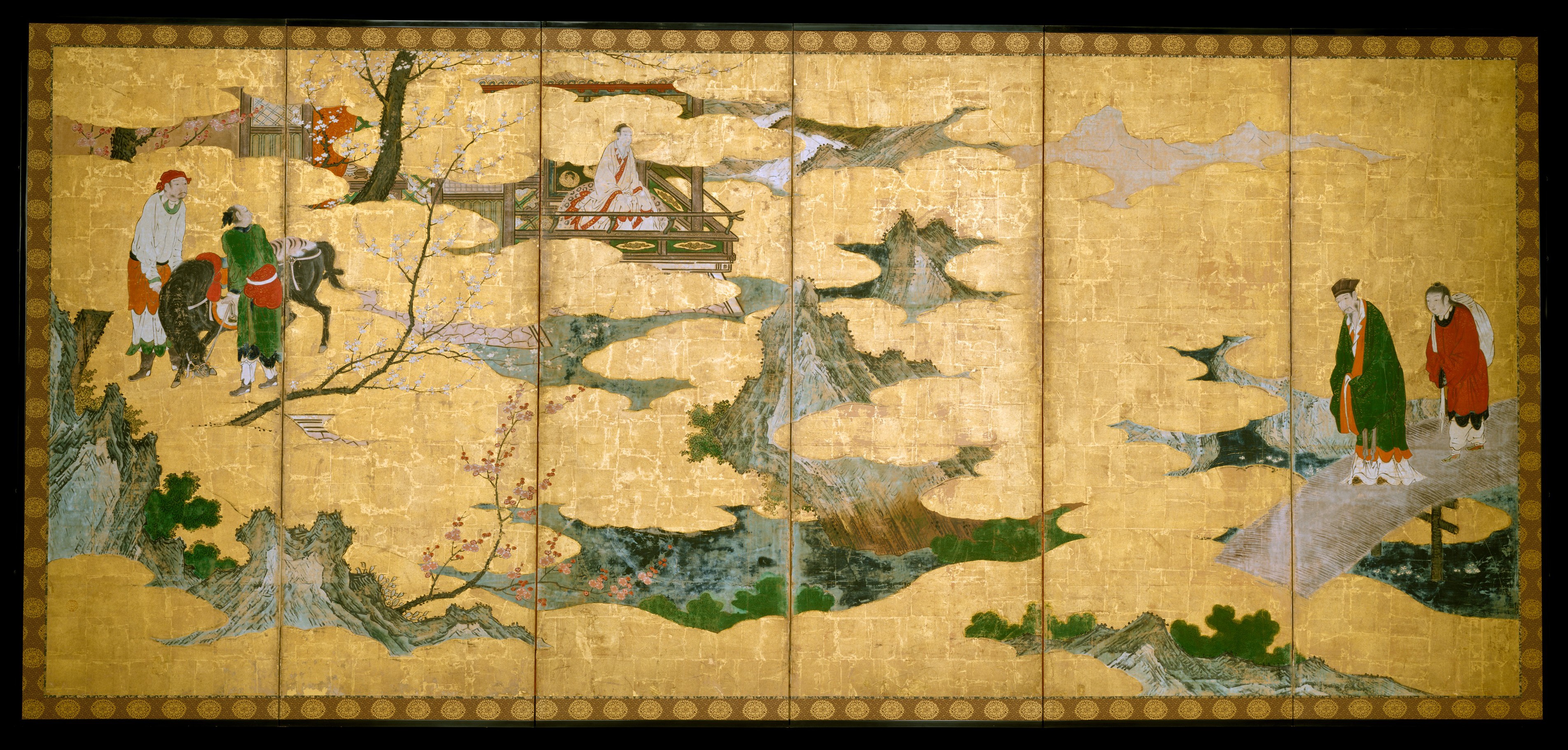The Return to Court of the Four Graybeards of Mount Shang (left); Su Shi’s Visit to the Wind and Water Cave (right
In the Style of Kano Mitsunobu 狩野光信 Japanese
Not on view
The subject of the right screen is the future Emperor Hui (reigned 194–188 B.C.) of the Han dynasty. Although the crown prince, his rightful ascendance to the throne was threatened by his father’s desire to install a son from a favored concubine. But the unprecedented return to court of four former officials who had previously abandoned their positions and secluded themselves in the countryside near Mount Shang assured Hui’s succession. Their loyalty so impressed the emperor that he withdrew his illegitimate proposal.
The left screen illustrates a poem by the renowned scholar and statesman Su Shi (Su Dongpo, 1037–1101). In 1073, as Su was traveling from Hangzhou to Xincheng, he stopped at the Wind and Water Cave to meet the young poet Li Bi. After they viewed plum blossoms and composed poetry together, Su inscribed poems on the walls of the cave. In the painting, the older man crosses a footbridge accompanied by a servant, while Li awaits his arrival seated in a pavilion high above a ravine. The slender trees and the crisp, delicate outlines of the rocks are reminiscent of works by Kano Mitsunobu, son and pupil of Kano Eitoku (1543–1590).
Due to rights restrictions, this image cannot be enlarged, viewed at full screen, or downloaded.
This artwork is meant to be viewed from right to left. Scroll left to view more.



